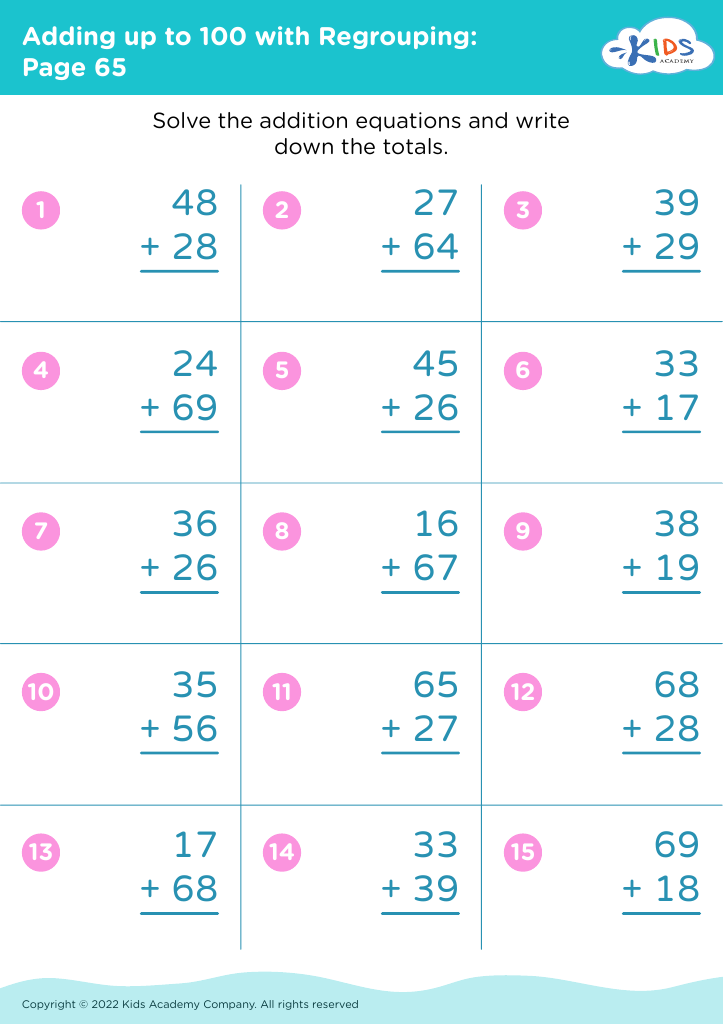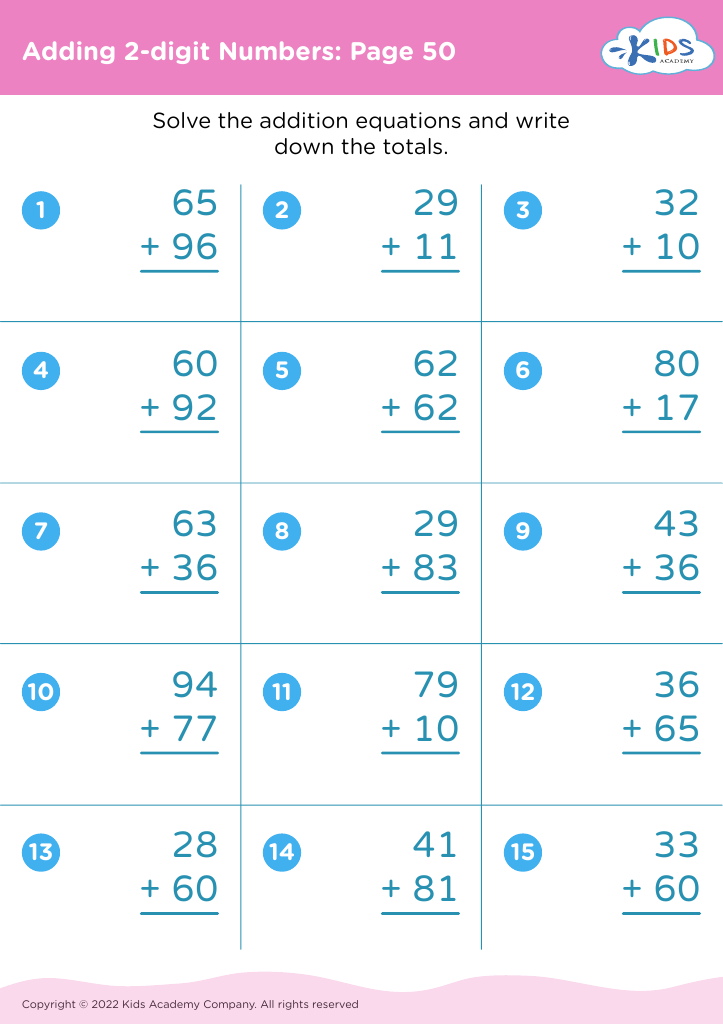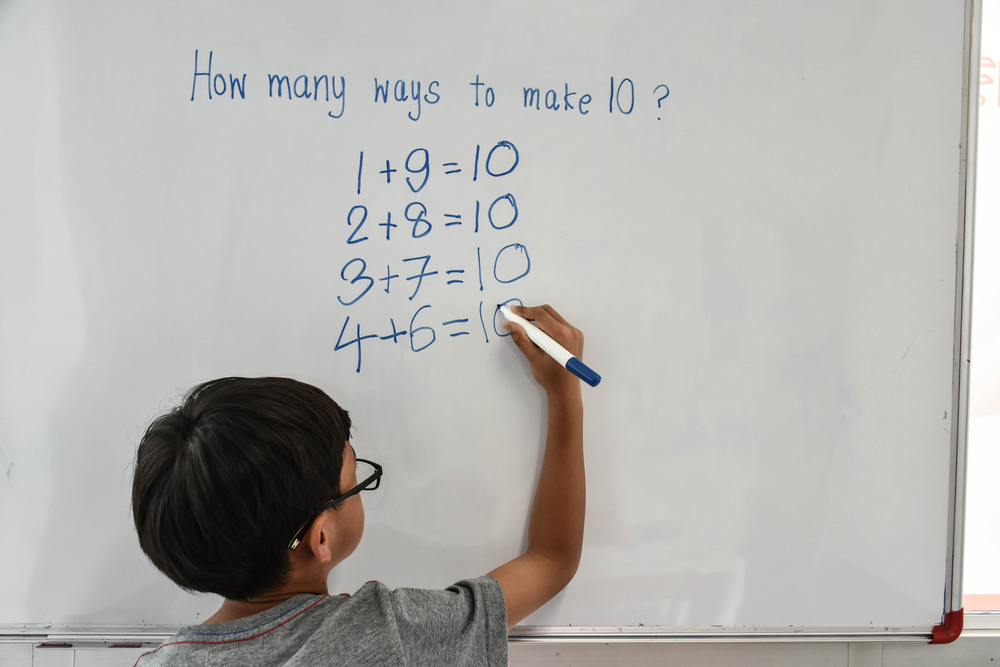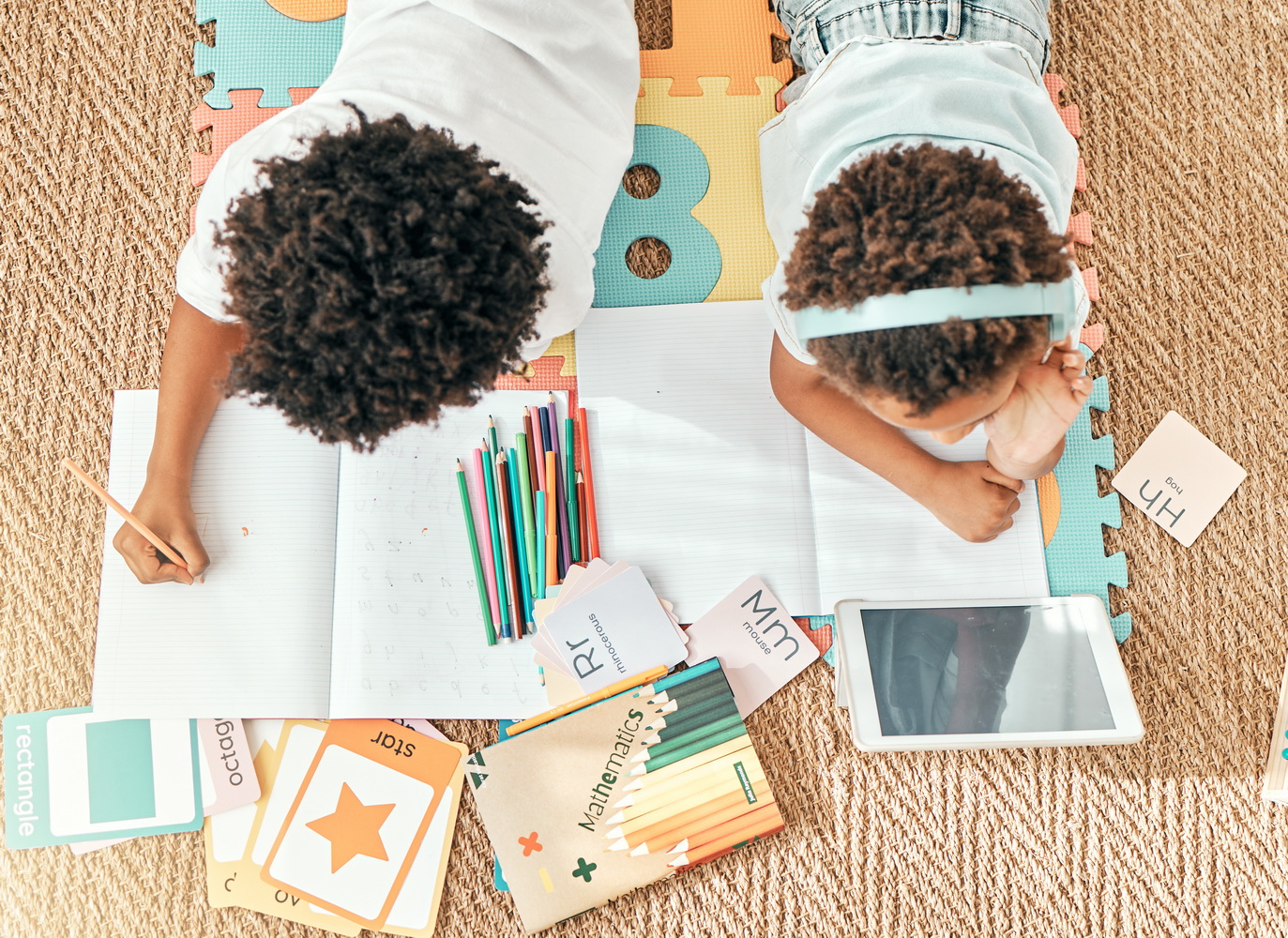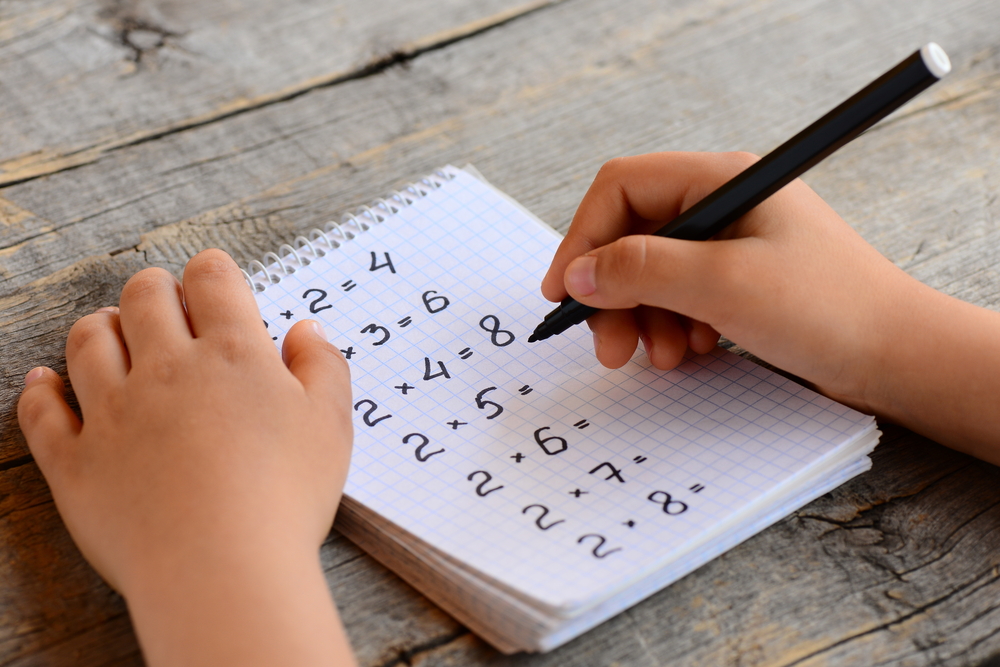Handwriting practice Addition & Subtraction Worksheets for Ages 8-9
5 filtered results
-
From - To
Enhance your child's handwriting skills while mastering addition and subtraction with our engaging worksheets tailored for ages 8-9! Our Handwriting Practice Worksheets combine math concepts with fun writing exercises, promoting both numeracy and fine motor skills. Each worksheet features a variety of addition and subtraction problems designed to challenge young minds, while guiding them in forming letters and numbers clearly. Perfect for independent practice or as a classroom resource, our worksheets make learning enjoyable and interactive. Help your child gain confidence in their math and handwriting abilities—download and start practicing today for a well-rounded educational experience!
Handwriting practice in conjunction with addition and subtraction is crucial for children aged 8-9 for several reasons. Firstly, this age marks a pivotal point in a child's educational journey, where they transition from learning basic math concepts to applying them in more complex problems. Practicing handwriting while solving math problems promotes fine motor skills, which are vital for writing clarity and neatness. Improved handwriting can boost a child's confidence and encourage them to express their thoughts more freely.
Moreover, integrating handwriting practice with math reinforces cognitive connections between verbal and numerical communication. This multi-sensory approach helps solidify mathematical concepts by enabling children to visualize and write out problems, which enhances comprehension and retention. As they write numbers and symbols, they engage in a tactile learning experience that can make challenging tasks less intimidating.
Additionally, parents and teachers can help children develop essential organizational skills by encouraging them to present calculations clearly. This clarity in notation can aid in reducing errors and improving overall accuracy in problem-solving. Ultimately, combined handwriting practice with addition and subtraction aids in building a strong foundation for future mathematical learning and strengthens children’s overall academic skills.
